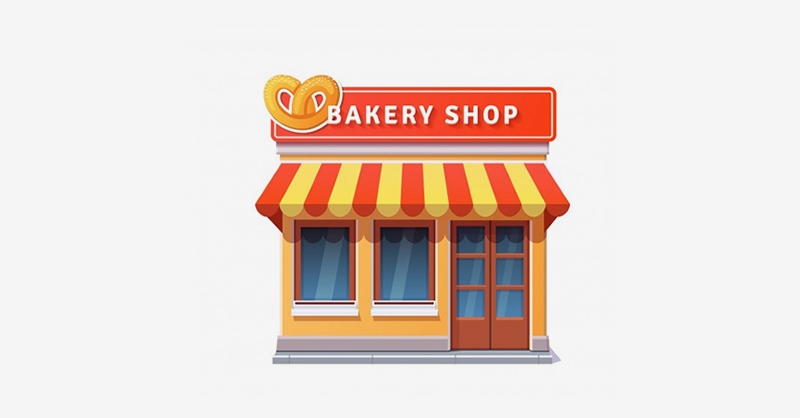No doubt that digital signage is a great option to display information about products and services with an immense potential to capture your customers’ attention at the critical place and moment of their decision-making – at the point-of-sale. This digital power can be used in so many different ways to boost sales and improve shopping experience that no review can possibly provide an exhaustive list of all and every application that digital signage may have.
You may argue that in-store digital innovation is and has always been driven by the big box retailers with generous marketing budgets, but the good news is that with the new trends in the industry even smaller retailers can easily jump on the digital signage bandwagon, starting from these simple applications of digital signage in stores.
Boost sales with up- & cross- selling
Remember the time(s) you were queuing up at McDonald’s/Burger King/KFC (or fancier quick service restaurants) with a clear intention to get one cheeseburger and a small fries, but ending up happily walking away with a Quarter Pounder with cheese, large Coke and extra-large fries? And it most likely happened not because a sales assistant talked you into overspending, but because that Quarter Pounder picture on that digital display looked so appealing to you and, after a better calculation, it was only a few dollars more for a much better bundle offer. That’s how up- and cross- selling work for many quick service restaurants. They don’t even need to say it – they simply use their beautiful digital screens to show it.
Any retailer can (and should , why not?) place monitors behind check-out counters and, with a help of an easy-to-use software capable of managing customized contents, influence their customers’ purchase decisions without the need to resort to the usual aggressive (and irritating) up- and cross-selling techniques.
Draw attention to in-store promotions
Yes, the good-old chalk board with special offers placed right outside the store is back in vogue, but it’s hard to compete against the communication possibilities that digital screens can offer. What do you think pops up more: the crossed-out price tag or a vibrant digital screen with beautiful and dynamic motion graphics placed at the eyesight level above the shelf clutter?Some retailers combine the simple communication function of digital displays with further add-ons, such as kiosks by Coupon Express Inc. that distribute discount coupons and loyalty cards for customers’ immediate use, which reportedly helped increase in-store sales by up to 20-24%. However, even simpler digital signage technologies can offer the needed wow-factor to draw customers’ attention to the in-store promotions.
Provide hyper-specific product information
For shoppers ever more concerned with both sustainability and convenience, in-store dynamic information screens are a true blessing. For each item, the screens can provide not only the standard, already available, information about price and product composition, but more intricate data formats as well, such as product origin (read: maps) and recommended uses (read: pictures and videos). That’s what Colruyt supermarkets do with their full-scale digital signage network, which, among other communication functions, lets its customers examine detailed product info and download recipes for purchased items using a QR-code. They also save tons of money on printing and thus reduce their carbon footprint – a great message to share in order to connect with an army of well-informed and environmentally-conscious consumers.
Save shelf space
In most strategic high-street locations, store spaces are limited to the point that the owners need to carefully choose only a few brands and a narrow number of items they’ll cater to their clients. Digital signage solutions, even the simpler displays, can in fact work as virtual shelf substitutes, limited by the database capacity and software potency, but not the (expensive) physical space constraints.
The UK retail giant Argos, who has built its reputation (and fortune) by being a catalogue retailer, has created entire seven shops in London by using nothing but digital signage. It consists of video walls, that move from being interactive shopping assistants, to advertising screens, to info points etc. Besides other ambitious projects, such as staying true to its core value proposition of offering competitive prices even in the fast-moving digital age, Argos is doing something every corner shop owner can do as well – use the digital signage as a virtual catalogue of products available for order, but not necessarily physically present in the store.
Improve waiting experience
Long (boring and frustrating) time waiting in line at the register could sometimes ruin the otherwise perfect shopping spree. Which is why busy retailers, like the Indonesian department stores chain Sogo, thought of transforming the downtime into the fun time by running eye-grabbing promotions and entertaining contents on the video walls behind the counter.
The checkout lines are the most obvious placements for digital screens – and you probably don’t need a team of marketing consultants to tell you that. Yet, it’s good to know that 84 percent of shoppers find that digital displays help customers pass the waiting time more quickly, reducing the perceived waiting by more than a third in some settings (such as grocery stores).
…Or anything else as long as you know your customer
Placing digital signage monitors around your big(ger) or small(er) stores can serve so many purposes, yet one common denominator is grabbing consumer attention at the strategic points of their shopping experience: whether it’s “decompression zone” by the entrance where your customers pause to collect their thoughts and intentions, product aisles where they compare different product options, or the counter where they make (or break) the decision to come back… Whether you chose the entertainment or information route, digital displays can be your loyal companions in connecting with your customers in stores and – why not? – turning such connection into a (mutual) profit.





